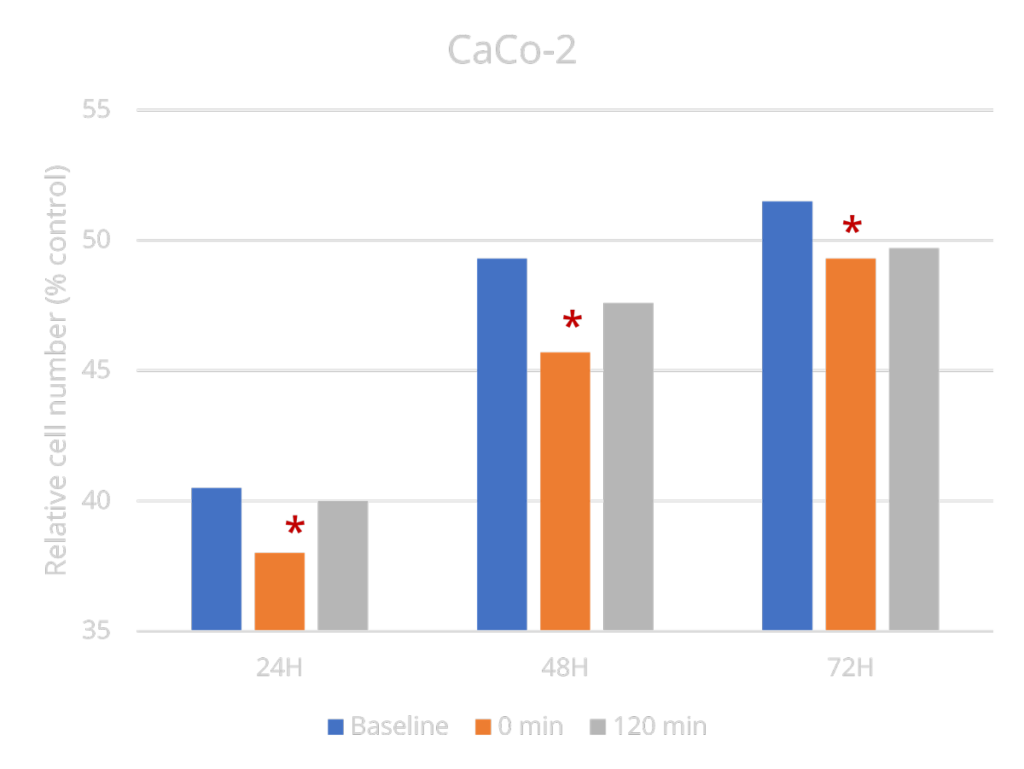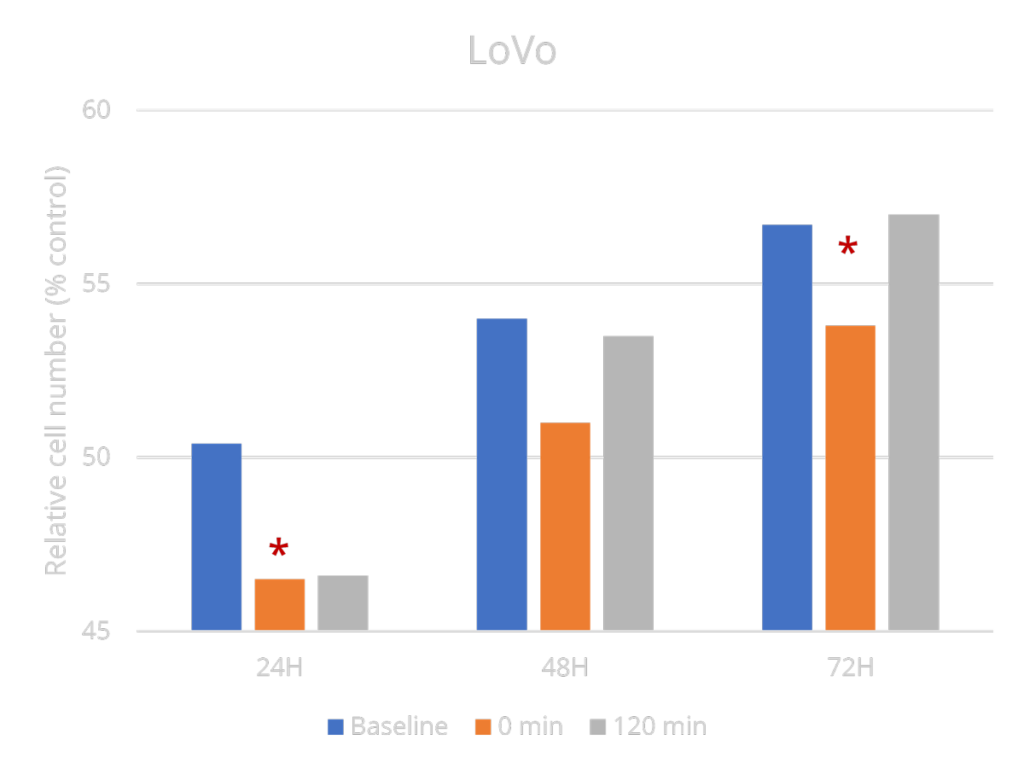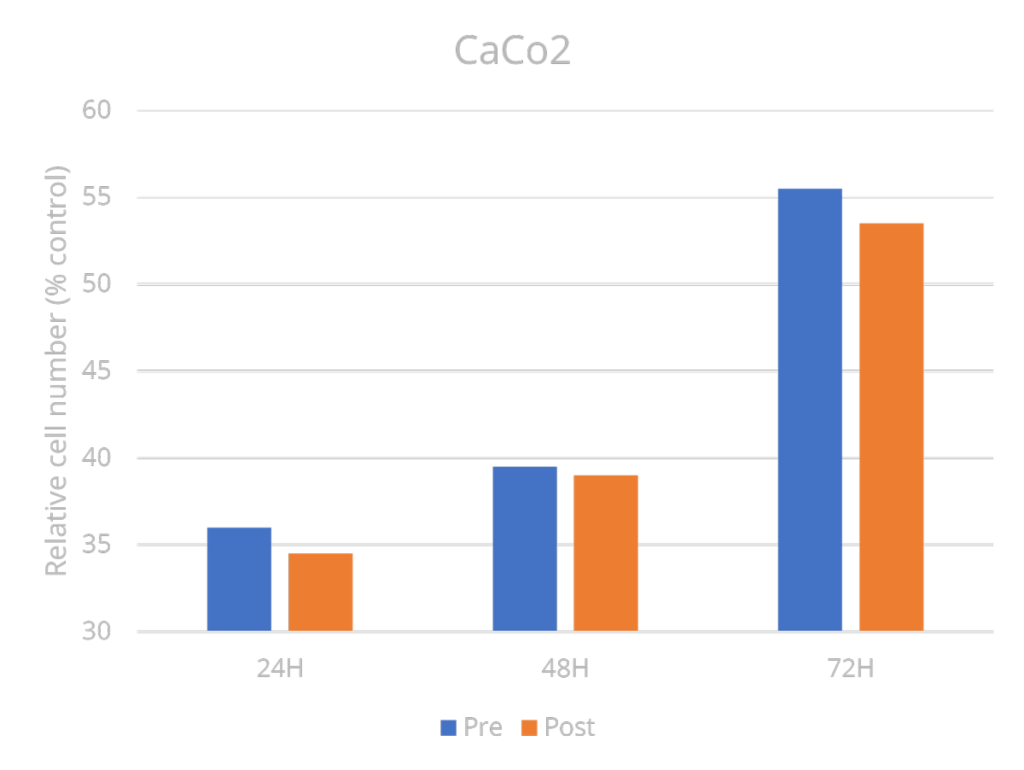Effect of HIIT on cancer cells proliferation

There is now a wealth of scientific evidence demonstrating the positive impact of physical activity on health in general, and on the development of cancers in particular. Along with breast and prostate cancer, colorectal cancer is one of the most common cancers in both men and women. Increased physical activity can significantly reduce mortality among cancer survivors. It also promotes a less carcinogenic metabolic environment. Scientific research shows that immediately after exercise, a reduction in the growth of breast and prostate cancer cells is observed. This observation is made possible by sampling and culturing cancer cells in vitro, then exposing them to serum taken immediately after exercise. In the long term, it would appear that it is the cumulative positive effects of each training session that provides protection against cancer cells (rather than chronic adaptation).
HIIT (high-intensity interval training) is a strong stimulus for the body, and numerous studies show that these physiological effects are often equal to or greater than those observed with continuous, moderate-intensity training (with or without equal work). Ultimately, the main advantage of this type of training lies in the intensity used. What about its influence on the growth of colorectal cancer cells?
The Study
To answer this question, a team of Australian researchers studied the impact of HIIT sessions on the growth of colorectal cancer cells. To do this, the researchers recruited 20 colorectal cancer survivors who had completed all their treatments more than a month previously and were over 40 years of age (the average age of participants was over 60). They divided the participants into 2 groups:
- “Acute” group: People in this group performed only one HIIT session.
- “Chronic” group: Participants in this group performed 3 HIIT sessions per week, for 4 weeks.
The HIIT session consisted of 4 repetitions of 4 minutes at 85-95 of peak heart rate, with 3 minutes of active recovery between each repetition, all on a cyclo-ergometer.
For the Acute group, blood was drawn fasting before the HIIT session, then immediately and 120 minutes after exercise. A liquid snack (consisting of carbohydrates and protein) was given to participants immediately after the first blood sample and 30 minutes before the HIIT session began.
For the Chronic group, a blood sample was taken 3 to 7 days before the start of the training program and then after 4 weeks of training. The effects of HIIT were studied on two tumor cell lines: CaCo2 and LoVo. These cells were incubated for 24, 48 and 72 hours with serum collected from the participants. Concentrations of interleukins 6 (IL-6) and 8 (IL-8) and tumor necrosis factor alpha (TNF-α) (all three cytokines), IGF-1, insulin and glucose were measured.
Results & Analyzes
The main results of this study show that a HIIT session significantly reduces the number of cancer cells immediately after training, whether after 24, 48 or 72 hours of incubation (Fig. 1). However, no difference was observed in the number of cancer cells incubated with serum taken before or after 4 weeks of HIIT (Fig. 2).
In terms of serology, immediately after the single HIIT session, there was a significant increase in TNF-α (+15.2%), IL-6 (+44.8%), IL-8 (+24.7%) and insulin (+38.8%). All these values returned to normal after 120 minutes, with the exception of insulin, which was significantly lower.) No significant difference was observed for the Chronic group.
Based on the rate of apoptosis (programmed cell death), which was no different before or after exercise, the researchers concluded that the reduction in cancer cells was indeed due to a reduction in their proliferation. This reduction in proliferation was concomitant with an increase in serum cytokines, and after 120 minutes, the return to normal of blood cytokine concentrations was accompanied by a re-proliferation of cancer cells. These results are in line with current scientific literature, and tend to show that the temporary increase in cytokine concentration following a HIIT session could be an important mechanism contributing to the limitation of cancer cell proliferation. However, the role of cytokines is rather paradoxical, since a chronic increase in cytokine levels (linked to chronic inflammation) is detrimental and an increased risk factor for cancer. The exact in vivo role of cytokines in cancer cell proliferation remains to be determined.
Practical Applications
Considering the temporary nature of the increase in cytokines following a HIIT session and the concomitant decrease in cancer cells, the role of physical activity seems interesting and important. Obviously, a single session won’t be able to change the metabolic environment sufficiently to improve overall health. But repeated exposure to this stimulus may help to improve health prognosis. This is probably why the researchers in this study found no significant differences after 4 weeks of HIIT. This is because the incubations were carried out with blood taken at rest before and after the 4 weeks. This means that the cancer cells were not exposed to blood taken systematically after each of the 12 sessions.
Regular and sufficiently intense exercise (provided there are no contraindications) should therefore be encouraged in patients diagnosed with cancer. Although the effects of sport on the body are manifold, and no mechanism of action is yet certain, regular physical activity is a vital aid in the treatment of many illnesses, and provides an effective accompaniment to the necessary medical treatments. What’s more, regular exercise can bring about a beneficial change in eating habits, making a major contribution to the fight against disease.
Reference
Devin JL, Hill MM, Mourtzakis M, Quadrilatero J, Jenkins DG and Skinner TL. Acute high intensity interval exercise reduces colon cancer cell growth. J Physiol 597.8 : 2177-2184, 2019.



